Top Ten Pokémon Toys from Hasbro, Jakks Pacific, and More
As the release of the latest Pokémon games, Brilliant Diamond and Shining Pearl, nears, now is a perfect time to look back at their greatest toys. With each generation, companies like Hasbro and Jakks Pacific have stepped out to create the toys that reflected the popular pocket monsters. In many ways, these companies looked to the anime designs as they crafted their molds. Moreover, main characters from the anime, like Ash Ketchum, reflect the wide appeal of the cartoon.
Luckily for fans of the video games, both the anime and games often shared the same designs. So, a Charizard from the games appeared the same as the animated one from the cartoon. Even when the anime adjusted the designs of pokémon, such as Pikachu, the games quickly picked up those changes as well. So, toys based on the anime often are indistinguishable from ones based on the games.
Nothing testifies to the success of the pokémon merchandise and toys more than the Nintendo-owned Pokémon Center. While this store is now only available online in America, there was once a physical store in New York City that teemed with toys and plushes. Even though this store closed in 2005, there are still several locations open in Japan, where fans could search for their favorite collectibles.
Presenting the top ten Pokémon toys from Hasbro, Jakks Pacific, and more
10. Hasbro’s 10th Anniversary Kyogre (2006)
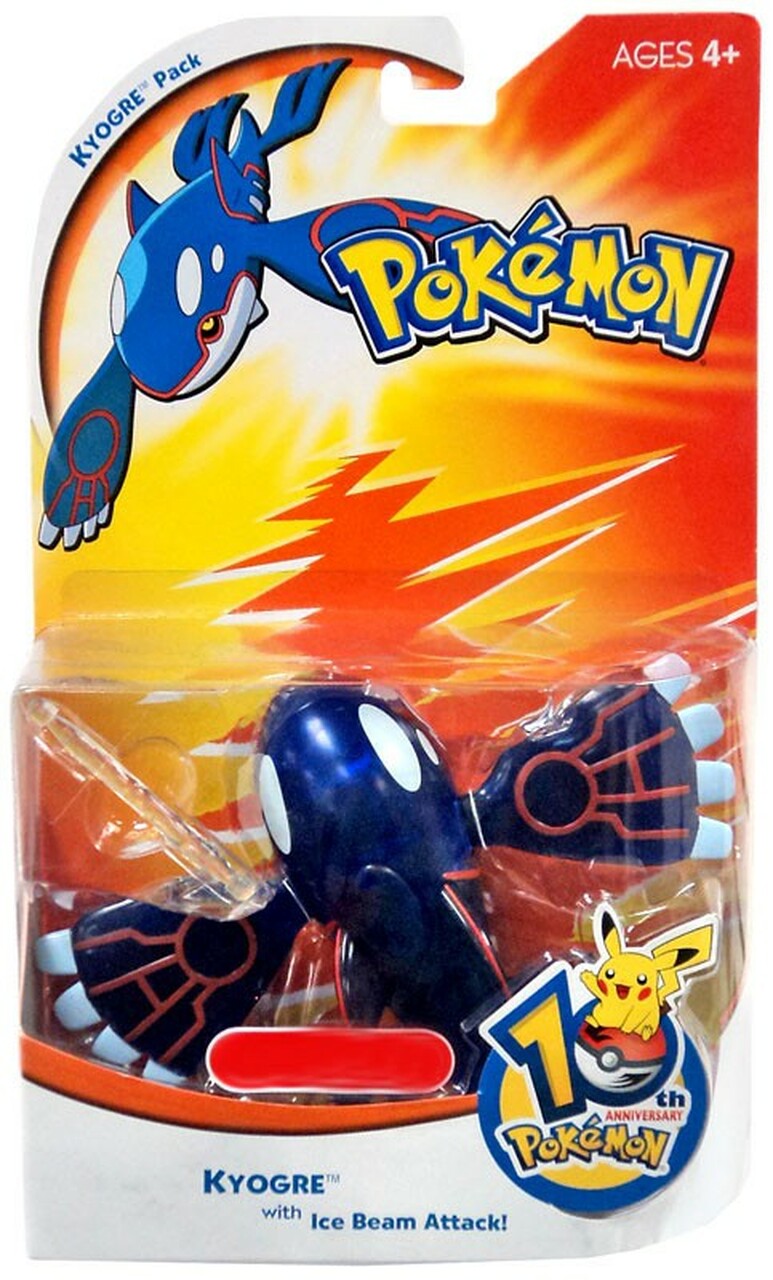
As Pokémon became ten years old, Hasbro decided to celebrate the occasion with a line of toys that celebrated the anniversary. Thus, they looked back at their catalog of pokémon toys to bring back the best-selling molds from the past. Hasbro then released these under the 10th anniversary banner as Target exclusives. Amongst this selection was a clear-plastic version of the Kyogre toy that Hasbro released in 2003.
Kyogre was the legendary pokémon that appeared on the cover of 2002’s Game Boy Advance game, Pokémon Sapphire. Thus, he played a key role in the third generation of these games. This pokémon has the unique ability to control the seas, even capable of expanding the oceans. In the game, Team Aqua aimed to capture and use Kyogre to raise the sea level and create more aquatic habitats.
Likewise, the anime featured Team Aqua and their attempts to control Kyogre. However, a botched trade between Team Aqua and Team Magma led to the two Legendaries duking it out. Otherwise, he has made brief appearances throughout the cartoon.
Hasbro’s Kyogre toy faithfully resembled the legendary pokémon. As with the original version of this toy, Kyogre came with an Ice Beam Attack. Thus, he came with a clear projectile that could fire from his mouth. This firing mechanism activated from a button on his back, which also made his mouth open and close.
9. Tiger Electronics’ Pokédex (1998)
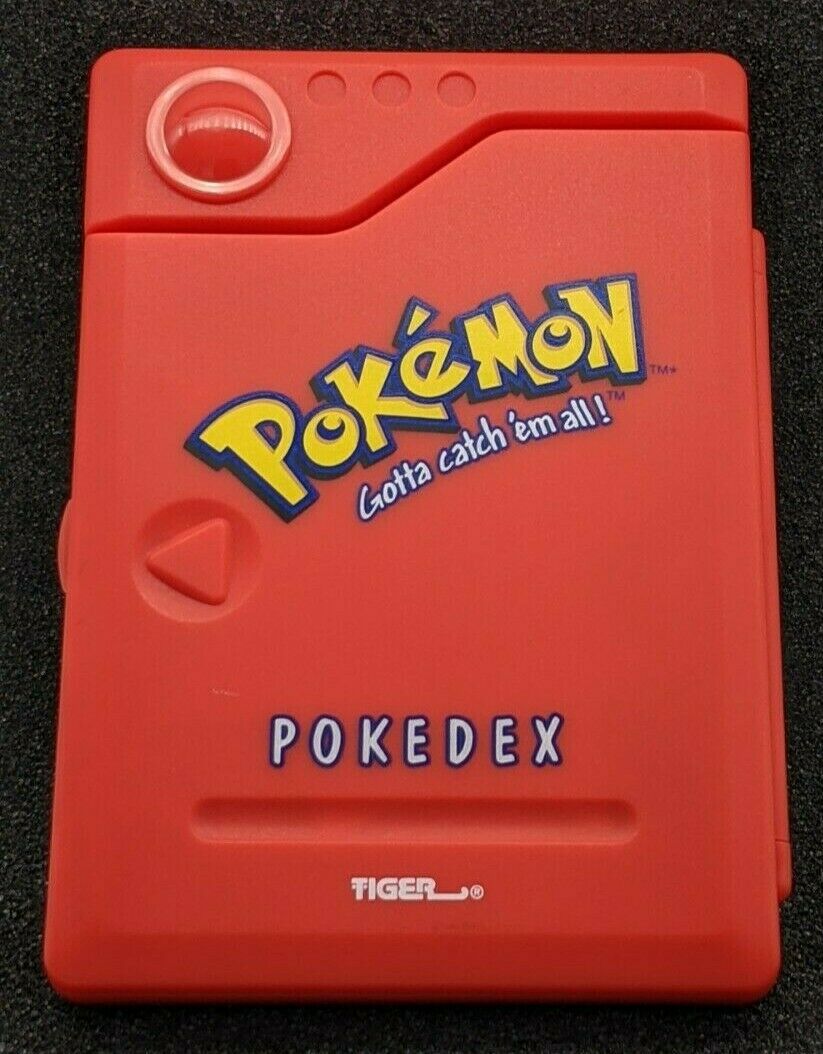
No Pokémon trainer was complete without his trusty pocket-sized pokédex. Seeing the appeal of this tool in both the games and the anime, Tiger Electronics quickly moved to create a real-life version of the tool. They also took notes of the design of the pokédex from the anime, which had a cover that flipped open to the right. However, unlike the anime, this handheld device only had a monotone LCD screen, which Tiger Electronics specialized in.
Once users turned on the Pokédex, several options in the main menu, from Page to even a Calculator, greeted them. Thus, they could search for their desired creature by selecting Page then typing in the name of the pokémon. The entries for these pocket monsters would then show an animated sprite of the creature along with the basic information.
In both the games and the anime, the pokédex was the most valuable tool for prospective trainers. After encountering a pokémon, this device gave information on the creature. The information expanded after trainers successfully captured those same creatures. With this device, trainers gained insight into the habits and abilities of their pokémon.
Since Ash Ketchum was not very competent at capturing pokémon, his pokédex became the main device that gave any information on the creatures he met. He even used it to gain insight into the creatures that his opponents used against him.
8. Hasbro’s Groudon (2003)
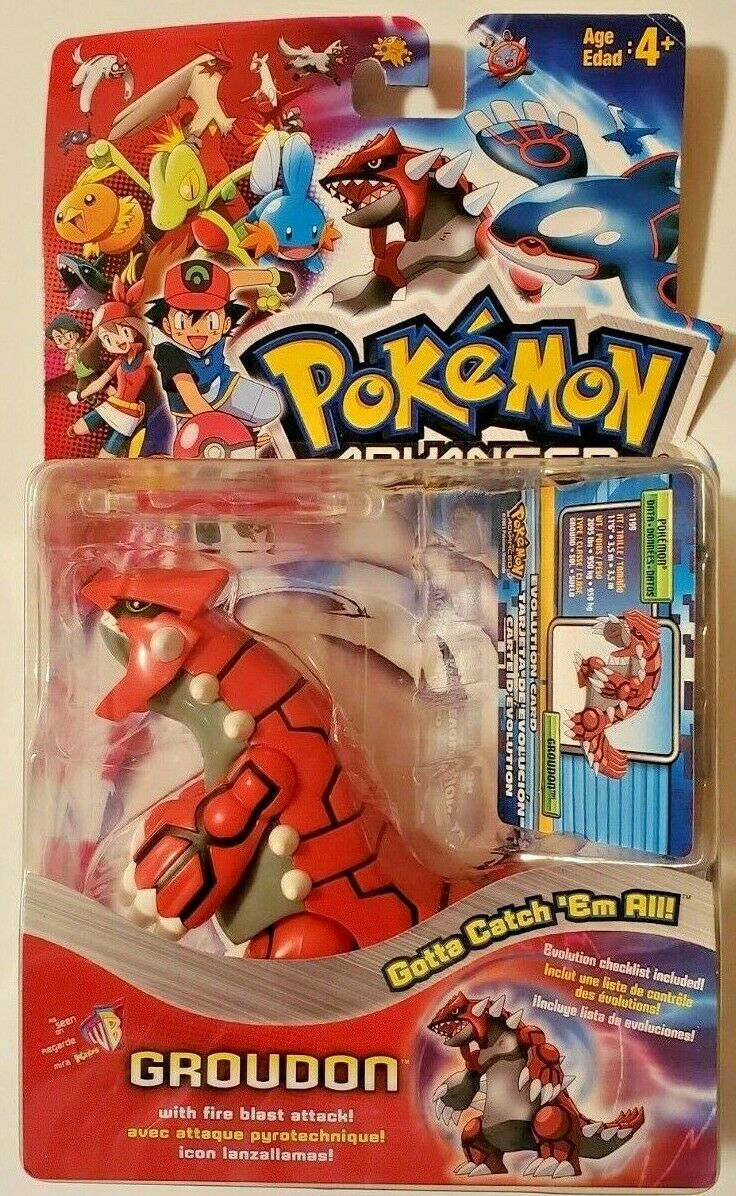
As the third generation of the Pokémon games hit the Game Boy Advance, Hasbro advanced their toy line to reflect this new generation. However, they opted to name the newest toy line after the current byline of the anime, Pokémon: Advanced. Thus, the toys did not mention Ruby nor Sapphire, even though the toys also reflected the new games.
Along with the various creatures featured in this toy line was the ground-type legendary that proudly appeared on the cover image for Ruby, Groudon. In stark contrast to his companion legendary, Groudon could make continents and the land expand. Thus, Team Magma desired to control this creature so that they could create even more habitats for land pokémon.
Groudon also appeared in the animated series and its movies, once again the target of Team Magma’s ambitions. Unfortunately, as Team Magma attempted to trade with Team Aqua, chaos broke out. Thus, Groudon and Kyogre began to duke it out. A version of Groudon also appeared in Jirachi: Wish Maker; however, this version was a twisted evil manifestation of a wish.
Hasbro’s toy faithfully used the design from the anime and game to create a small-scale version of this legendary pokémon. IT also came with a fire blast attack. This toy also came with a small card that gave the stats for this creature.
7. Tomy Takara EX ML-05 Rayquaza (2019)

Even though Game Freak introduces new Pokémon with each new generation, fans still love collecting toys of their favorites from the past. Thus, Tomy Takara released a detailed figurine of the legendary sky dragon pokémon, Rayquaza. Not only is he one of the top favorite legendaries for most fans, but he also appeared on the cover image for Pokémon Emerald.
The figurine from Tomy Takara only has a limited range of articulation, found in the rotation of the arms. However, the paint job is extremely detailed and clean. Thus, this figure faithfully recreates the appearance of Rayquaza from the anime and games. While this figure is only about three inches tall, it twists and turns so that the body is twice as long as it appears. Moreover, unlike other Rayquaza figures, this one can stand up on its own thanks to the curl of his body.
In Pokémon Emerald, Rayquaza played a key role in restoring the balance of the ocean and earth. For, both Team Aqua and Team Magma had succeeded in awakening Groudon and Kyogre, leading to a brawl between the two legendaries. The fight between these two titans disturbed Rayquaza from his realm in the sky, so he came down to stop the fight and restore the balance of the ocean, earth, and sky. Later, trainers had the chance to ascend the Sky Pillar, where Rayquaza dwelled, to catch this Legendary.
On the contrary, the anime introduced Rayquaza in Destiny Deoxys. Thus, he challenged the extraterrestrial pokémon, believing that it was an invader to his territory.
6. Bandai’s D-Arts Mewtwo (2013)
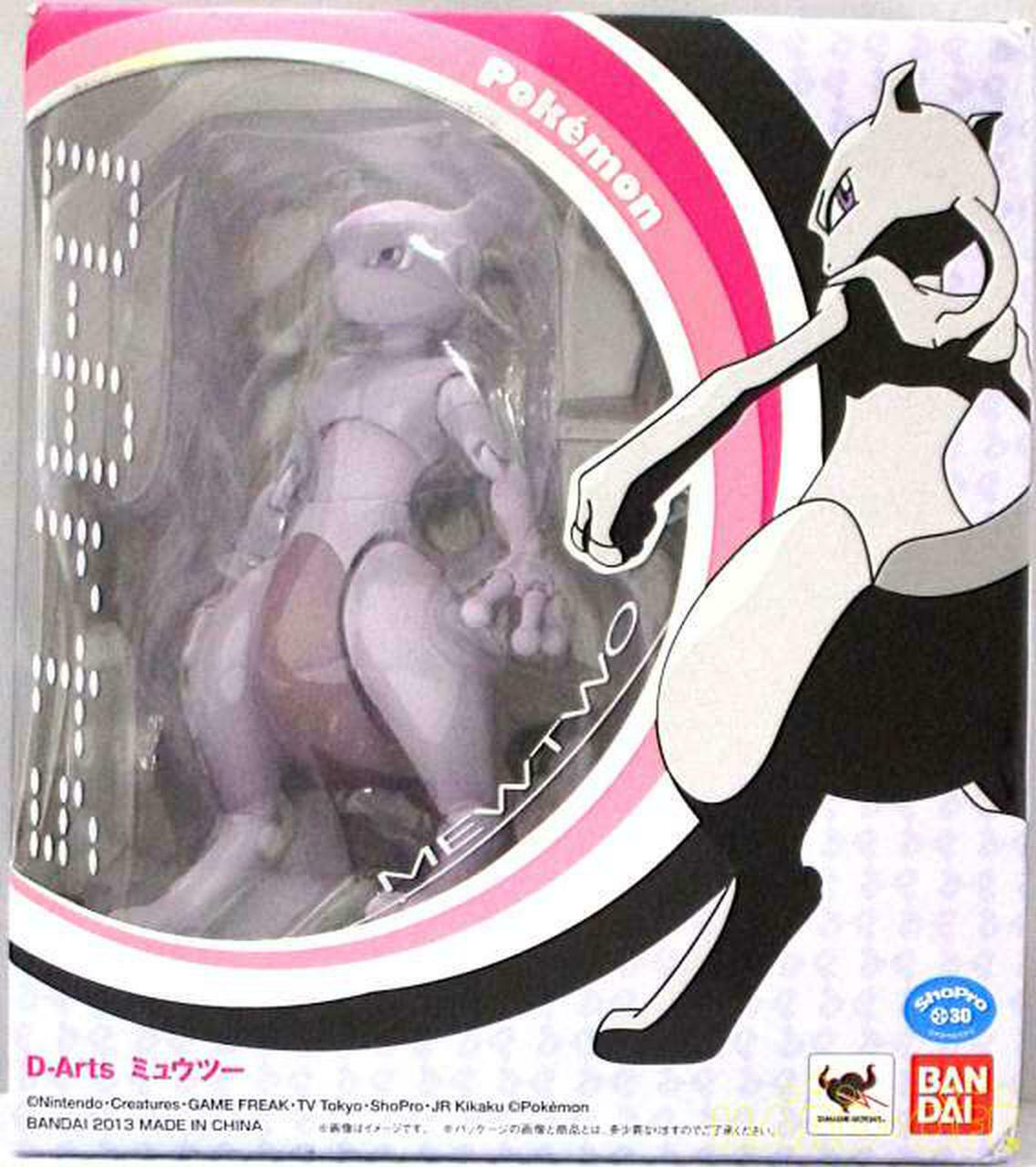
The Tamashii Nations branch of Bandai has aimed to create highly detailed and articulated figures of popular figures from anime, movies, and video games. However, this branch has created several lines, from MonsterArts to Figuarts, gaining a following from Godzilla and Dragon Ball fans. However, there was a time when several game-inspired characters, like Megaman, fell under the D-Arts line.
In 2013, Bandai created one of the most articulated versions of Mewtwo, the 150th pokémon, for the D-Arts line. As with most figures from Tamashii Nations, Mewtwo came with a second head along with blast effects. He also came with a small Mew figure that had no articulation. While most figures would come with at least a second pair of hands, Mewtwo only came with one additional hand which included a peg for the blast effect. Since Mewtwo’s hands featured ball joints, he required no additional hands.
Mewtwo was the genetic experiment that aimed to create the most powerful pokémon ever by modifying the genes of Mew, the assumed first pokémon ever. As the experiments proved fruitful, the new creature proved vicious and uncontrollable. Thus, Mewtwo escaped the labs that he was born in before he settled in the Cerulean Cave.
Likewise, the anime showed that Mewtwo was the product of genetic manipulation, with scientists attempting to recreate the glory of Mew. After he escaped from these scientists, Giovanni manipulated him into a weapon. Eventually, Mewtwo escaped from Team Rocket as well before he attempted to strike back at the world to become its ruler.
5. Jakks Pacific’s Deluxe 8” Palkia (2007)

As Pokémon moved into the fourth generation of games, Jakks Pacific began taking over the toy production in the west. Thus, they created the toy line for Diamond and Pearl along with many other lines over the years. However, many of these toys retained the standards that Hasbro had set earlier on.
In 2007, Jakks Pacific introduced three size ranges for Pokémon Pearl’s mascot monster, Palkia. First, there was the three-inch figure. Then, there was a six-inch figure with electronics. Finally, Jakks Pacific released a massive eight-inch figure exclusively to Toys’R’Us stores. While this figure was massive, it did not possess an expanded range of articulation. Instead, the increase in size offered the opportunity to give this toy an impressive paint application. It also stood out in any Pokémon toy collection.
As Pokémon Pearl centered around the ambitions of Team Galactic, who wanted to control both time and space. In this game, their leader, Cyrus, succeeded in summoning Palkia to help him destroy and remake the universe. To defeat his ambitions, the player joined up with their rival to take down Cyrus and Team Galactic. Then, they received the chance to capture Palkia.
The anime version of Palkia never showed up until The Rise of Darkrai, where he battled against both Dialga and Darkrai. For most of the film, Palkia focused on striking out against his opposite, Dialga. However, Darkrai’s interventions in this fight also lead to Palkia attacking him as well.
4. Jakks Pacific’s Deluxe 8” Dialga (2007)

Along with Palkia, Jakks Pacific also created several action figures of Diamond’s mascot pokémon, Dialga. Mirroring his counterpart, Dialga also appeared as a three-inch size, six-inch electronic figure, and the massive eight-inch figures. Also, like his counterpart, the eight-inch figure was another exclusive for Toys’R’Us.
While the scale of this figure offered no additional options for articulation, it provided ample room for Jakks Pacific to apply a glorious paint job. Thus, this figure stands out from any collection thanks to both its size and paint job.
Where Team Galactic successfully summoned Palkia in Pearl, Cyrus summoned Dialga as he realized his ambitions in Diamond. Where Palkia had power over space, Dialga’s powers focused on the flow of time. Thus, this creature could seem to warp by manipulating time. Whether he slowed down, sped up, or stopped time, the average trainer could not contend with.
As with Palkia, Dialga made his animation debut in 2007’s movie, The Rise of Darkrai. Even before Dialga and Palkia arrived in Alamos Town, their extradimensional battle caused disturbances. However, their battle became even more dangerous when they crossed dimensions to continue their battle. Both of their attacks, the Roar of Time and Spacial Rend, threatened to destroy the town.
3. Hasbro’s Electronic Lugia (2000)
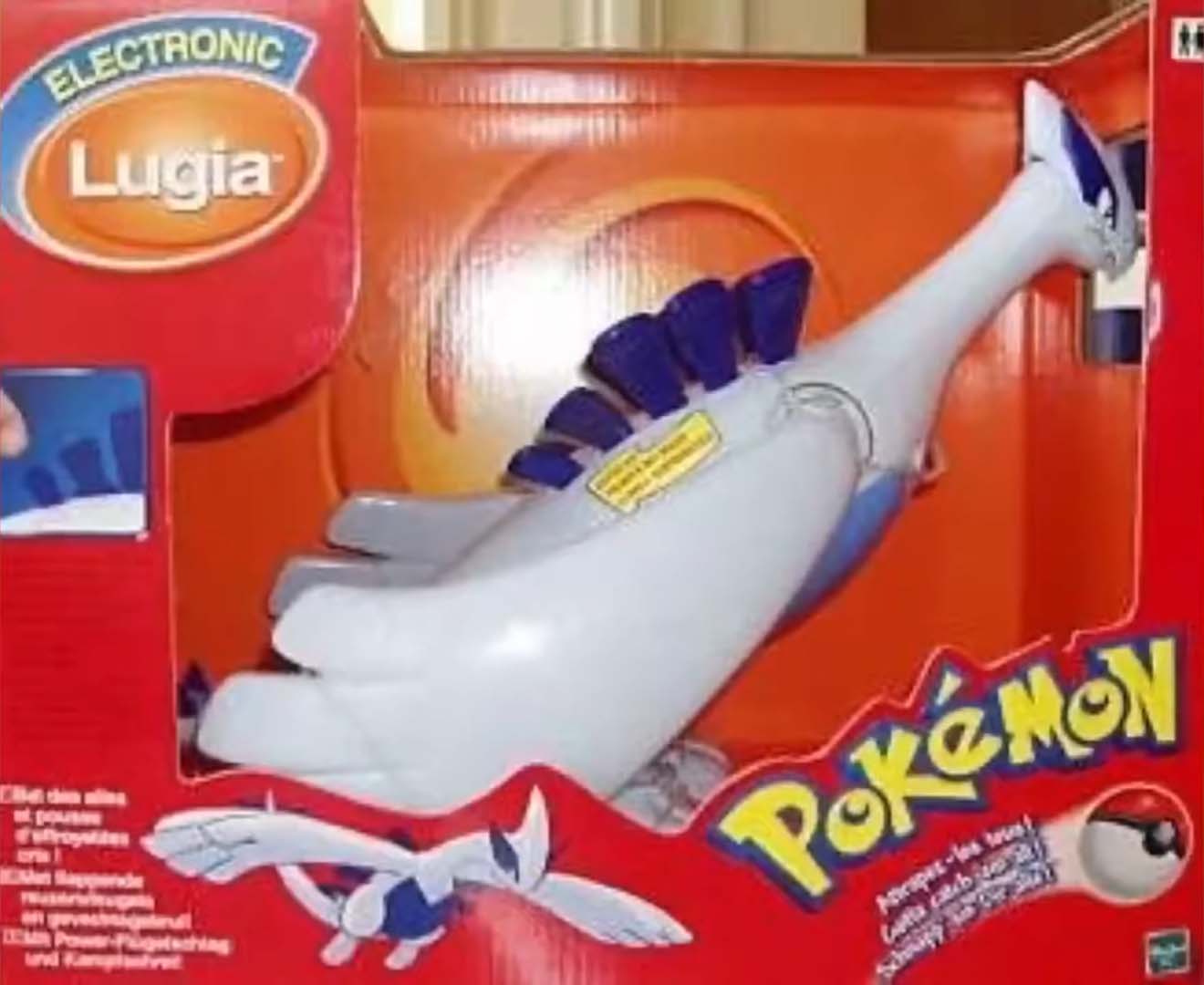
As Pokémon prepared to return to theater screens with Pokémon 2000: The Power of One, Hasbro released a new line in celebration of the movie. Within this line was one of the most impressive Lugia figures to date. Standing at just above 10 inches tall, this action figure towers over most Pokémon and other Lugia figures. This size also gave him a gigantic wingspan.
When pressing down on the back right fin on his back, Lugia’s beak would open, and he would start to make a variety of noises. These noises ranged from Lugia’s song to various roars. While the wings could manually move thanks to their ball joints, they also contained a gimmick action. When the right leg moved up and down, the wings also moved, flapping along with the movement. Meanwhile, both the left leg and tail could also swivel, but they activated no additional gimmicks.
Lugia prominently appeared as the mascot for Pokémon Silver and Soulsilver. To locate Lugia in the game, the trainer used the Silver Wing to encounter him. From there, these trainers received their chance to capture the Legendary bird who acted as the guardian of the seas.
Meanwhile, in the movie, Lugia played a larger role. When a collector named Lawrence III aims to get his hands on the Legendary Birds, Articuno, Moltres, and Zapados, he unintentionally caused these three to battle it out. Only through Lugia’s interference did the fighting stop. Thus, the birds returned to their respective islands.
2. Hasbro’s #6 Charizard and #9 Blastoise (1999)

As Hasbro first began creating Pokémon toys, they created several sets that included important duos from the games and anime. For instance, there was Pikachu and Meowth in one pack. Then, Jigglypuff and Togepi came in another pack. However, the pack that stood out held the evolved forms of two of the starters, Charizard and Blastoise. These two also appeared on the covers of Red and Blue.
Both large figures featured articulation, though they had limited ranges of articulation. For instance, Blastoise could not move his arms or legs. However, there was articulation in his head. On the other hand, Charizard could move both his arms and legs.
Charizard is one of the most popular creatures from the pokémon franchise since he was one of the first three starters. This fire pokémon began as Charmander before he evolved to Charmeleon then finally Charizard. As Charizard, he gained the ability to fly, thus the game classified him as a flying fire pokémon. However, he closely resembles a dragon with a fiery tail.
Meanwhile, Blastoise is also an immensely popular choice that also was one of the three starter choices for generation one. If trainers picked up Squirtle, their pokémon would eventually evolve into Warturtle before finally becoming Blastoise. In his final form, Blastoise gained two large water cannons that popped out of his shell.
1. Hasbro’s Electronic Pikachu (1998)
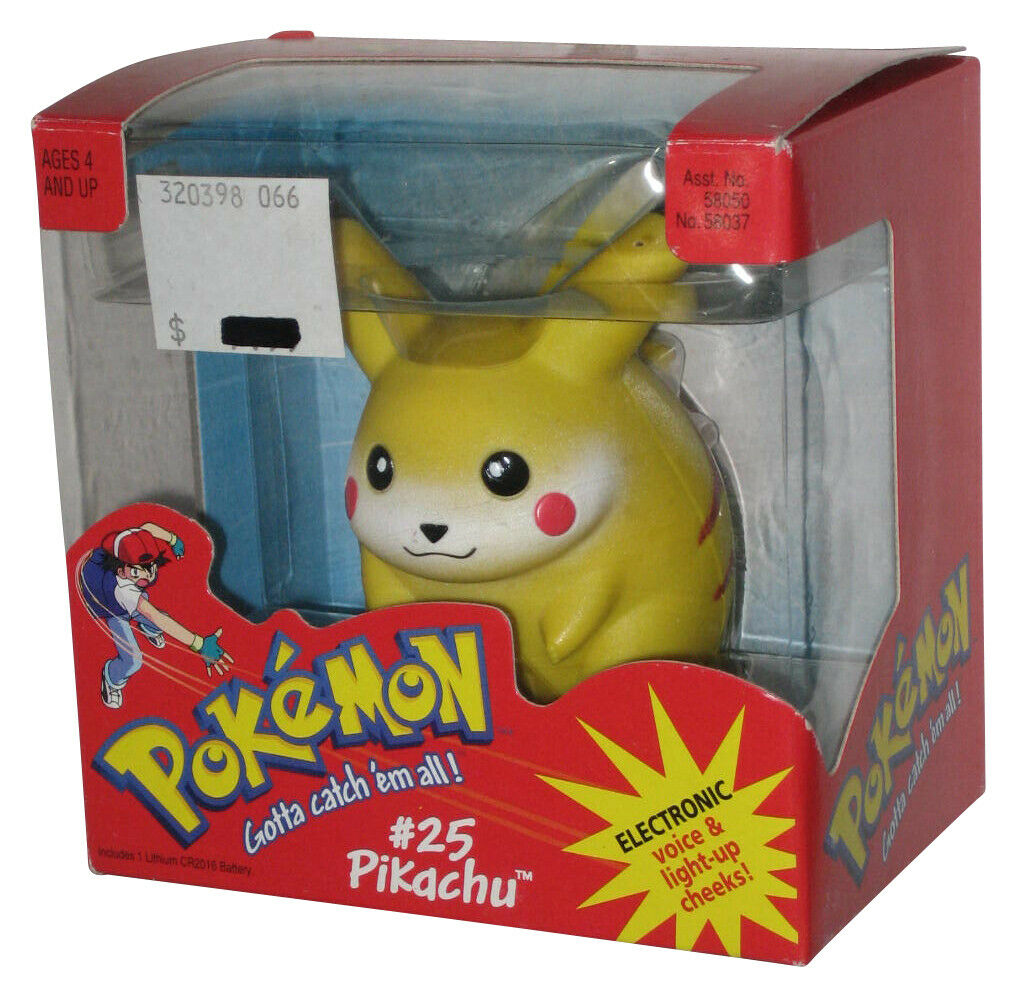
Before Pokémon officially became the multimedia sensation that it is today, Pikachu was just one of the average electric-type creatures one could catch. This chubby mouse had no greater importance than being the beginning form of Raichu. However, that all changed as the anime began looking for a mascot to represent the series.
In the early phases, the Pokémon manga experimented with making Clefairy the mascot for the franchise. However, this idea never took up, perhaps because people easily confused Clefairy with Jigglypuff. Thus, the anime’s creators looked for another creature to turn into their mascot. So, they looked for a creature that would appeal to both boys and girls, leading to Pikachu becoming the mascot.
Meanwhile, Hasbro created an electronic version of this electric mouse for their first waves of Pokémon toys in 1998. Since the anime had not begun in full swing, the company used the chubby design that the mouse had in the games. Thus, this Pikachu stands out in comparison to any of his toys that came out later.
This figure was slightly larger than the standard pokémon figures from Hasbro. However, its main draw was its electronic gimmick. Not only did this electronic toy have an electronic voice, but his cheeks also lit up.
What were your favorite Pokémon toys?
Today, we picked the greatest toys that resemble the most popular pokémon from the franchise. Overall, we concentrated on the vintage toys and classic characters from the first four generations. However, there are still hundreds of Pokémon toys that all have their own charm.
So, we would love to hear from you. Let us know in the comments below what your favorite Pokémon toys are.
Do you have old and used Pokémon toys?
If you have a collection of old and used toys, you can turn those toys into cash. There is no reason to let those old toys collect dust. Contact us today to sell your Pokémon toy collection.
About the Author
Chris Ingledue is the founder and owner of Wheeljack’s Lab pop Culture and Toy Shop. His vision has always been to reunite customers with their favorite childhood toys and pop culture, triggering fond memories, and reigniting their imaginations. Every day he works in the “lab” where it’s Christmas 365 days a year; scouring the internet – like we did the Sears Catalog of yesteryear – for the next great treasure, awaiting the arrival of the postman as if he was Santa Claus himself and helping collectors worldwide with their own versions of Christmas. For Chris, every day as a vintage toy buyer is an absolute joy!